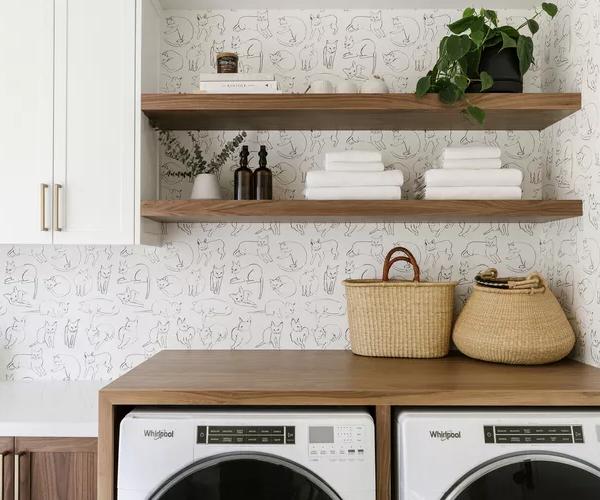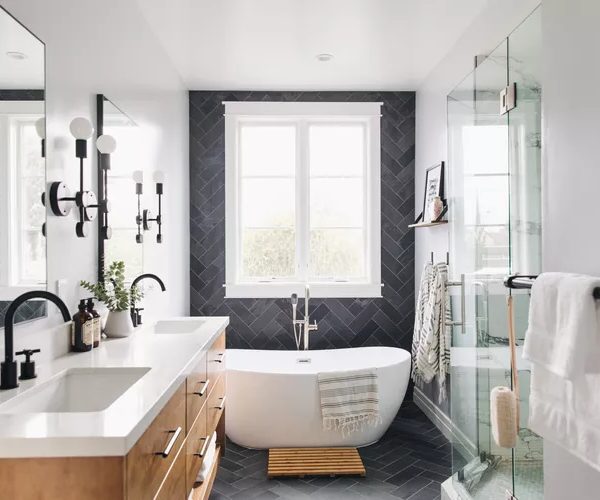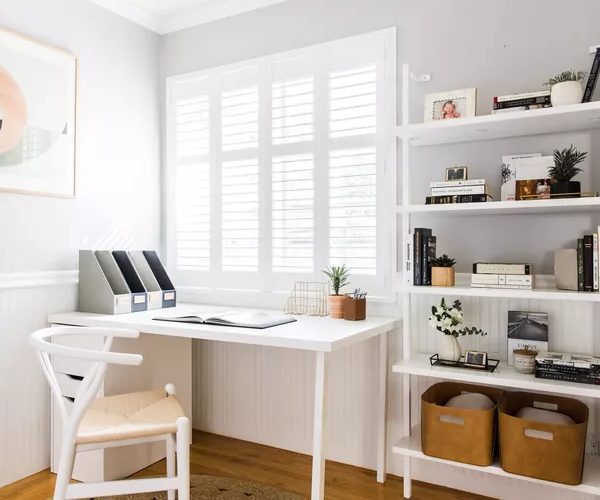Whether you simply love the idea of designing your room or you have to do it because you can not hire an interior designer, doing so from scratch can be a daunting task. Remember that interior designing is more art than science and there aren’t any hard and fast rules to decorating a room in an instance. But if you’re trying to find a way, we have brought a start-to-finish guide that will help you visualize all the steps needed to design your room like a pro.
-
Set the Mood
Room design can sometimes be an overwhelming task. Do not ask yourself what you want your space to look like but ask yourself how it want it to feel like. That will ultimately guide you toward colors, textures, decors, and furniture choices. If you’re thinking of a light and airy zen oasis, that will suggest minimal furniture and more natural items. If an energizing casual family space is the requirement, that might include bold colors and patterns. It is necessary to focus on the mood rather than a particular style or trend as that will help you create a versatile space that will work for you.

2. Get inspiration
Before you start, it is important to get an inspiration. Check out your favorite social media channels, interior design magazines, books, and websites, and get inspired. Imagine the places you want to go to and think why. You can ho ahead and create one. If you live alone, this is an even better chance to understand yourself a little better. In case, there are family members at home then it is an opportunity to work together on a home that suits everyone’s interests.
Also, Read Lanai Decor: Furnishing and Decorating Tips Pros, Cons, Differences, And More
2. Get Real
It is better to design a creative space where you want to live now rather than striving for some aspirational vision of how you think your life should be. If you have naughty kids or pets, choose upholstery fabrics and surfaces that can take a beating and still look nice. If you live all by yourself and rarely have visitors, you don’t have to have a dining table for six. Are you working from home? If yes, it is recommended to move that makeshift office in the corner of your living room into a spare room that you rarely use. Before buying anything, have a realistic budget that will help you prioritize your spending habits.
4. Declutter
If you’re redecorating, you must start by eliminating anything that you don’t want, use, or like. And if you’re designing an empty room, think properly before bringing in any items. There is room for personal items and things that are necessary in any space but a good interior design comes by embracing the essentials and working from there.
5. Map It Out
In the era of the internet and social media, there are lots of free online room design tools and home software options for you to create a floor plan. However, space planning doesn’t have to be overly technical. You can simply sketch out layout ideas on paper or mark out furniture placement with painter’s tape to understand scale and flow. Before buying furniture, take note of your space. Measure twice if needed. Otherwise, you might find that the sofa you ordered is either too large that it won’t enter your front door or tiny for your living area.
6. Think and decide on a color palette
Whether you want it all neutral or you have decided on an eye-catching color palette, deciding early on will help you create a unique look. Neutral rooms can be lit up with accessories that can easily be changed. If you want your room to have something green, pink, or blue, pick three complementary shades to keep the fun going. If you’re a fan of an all-white room, choose shades of white that allow you to mix and match furniture styles and periods easily.

7. Start with the finishes
If want desperately want a makeover rather than a remodel, think about what changes you can bring about on the room’s existing flooring, wall color, and fixtures to beautify and personalize the space without renovating. If you’re starting from an empty room, refinish floors, paint walls, add tile, wallpaper, or wall panels, or install cabinetry before you bring in furniture and other accessories.
8. Choose Anchor Pieces
When it comes to designing your living area, always focus on your anchor piece which is normally a sofa, before fussing over throw pillows. Purchasing your biggest most expensive purchase in the beginning will make sure that you don’t skimp on quality for high-use items. It will also help you maintain a sense of your budget and visualize how much space you have for extra furniture once the main pieces are installed.
9. Choose secondary furniture
Once you’ve chosen the perfect sofa for your living space, start looking at the coffee table to know what sizes are a great fit or whether an oversized pouf would be a better fit. If you pick a rustic wooden frame table in the dining room, choose contemporary metal chairs for contrast. Complement a modern upholstered headboard with vintage lighting or bedside tables.

10. Choose rugs, curtains, textiles
Now that you know how the roo flows, you can choose curtains, rugs, and textiles like bedding, decorative pillows, and throws that will complement your anchor pieces and add color, pattern, interest, and texture.
11. Light it Up
One of the most important room design tips is focusing on lighting. Prioritize natural light for daytime and add enough layered options for the evening. It could be from functional task lighting to warm ambient table lamps or sconces, to sculptural pendant lighting that functions as décor. Ensure to light all four corners of the room to avoid creating shadow and create a sense of well after dark.
12. Accessorize
Now that you have placed all the essentials in their correct places, relax, take a step back, and ask yourself what is missing. Choose and hang art, pictures, or decorative mirrors. Add extra decorative pillows and throws. Style shelves and tables with design books, candles, decorative objects, plants, or precious souvenirs. This is your chance to add texture through personal touches that will bring the room to life and make it the home you’ve always wanted to live in.
FAQs
Q: What are the seven principles of room design?
A: There are seven main principles of interior design: balance, harmony, rhythm, proportion and scale, emphasis, contrast, and details. These concepts can be applied to any room in your home, from the living room to the bathroom.
Q: Why is a room layout important?
A: The layout of each room is an important consideration when it comes to décor and design. It will have a big impact on how aesthetically pleasing, comfortable, and functional a room will be.
Q: Which room should I decorate first?
A: We all want to have a cozy home, but still makes a great impression on anyone who is entering it. For this reason, the first room you should redecorate to ensure your home is welcoming is the living room.
Q: How long does it take to design a room?
A: The interior design process takes about an average of six months to complete. In a nutshell, the duration of transforming a space varies based on several factors. The project scope influences the timeline. Suppose it’s simply redecorating a room with a few new pieces of furniture and decor.
Also, Read How to Decorate Tall Walls: Creative Ideas for Transforming Large Vertical Spaces
